As colder weather creeps in this winter, many of us will be keen to help wildlife in whichever ways we are able to. One of the easiest ways we can do this is by looking after our wild birds. It is relatively inexpensive to help them with the provision of water and suitable food, especially during times of inclement weather such as snow.
Can I feed wild birds bread?
There has been a lot of media attention in recent years about feeding ducks bread, and rightly so. Much of the general public is now aware that we shouldn’t feed ducks bread as we commonly did for years. It is like junk food for them and can cause serious health problems, including ‘angel wing‘.
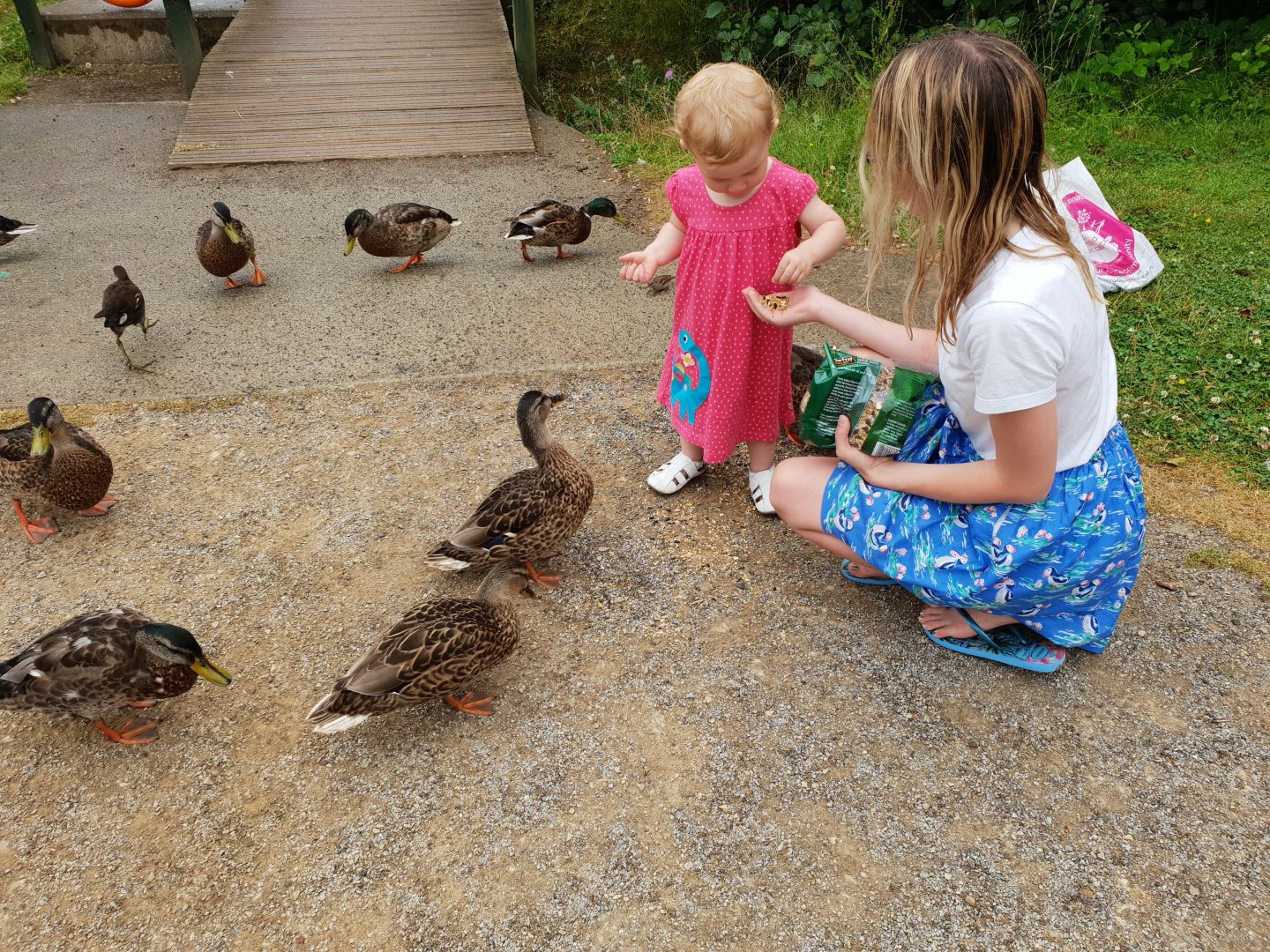
However, when it comes to most other birds it is okay in small quantities. It isn’t very nutritious for them, so it is important for them to eat a varied diet containing enough protein, fat and vitamins to help them survive. According to the RSPB, Soaked bread is easier for them to eat and brown is better than white for them.
Feeding wild birds
What you should put out to feed wild birds depends on what visits your garden or what you would like to attract. Some prefer to eat from a hanging feeder, whilst others will be satisfied to eat from a bird table or even the ground. Let’s take a look at what some of the UK’s wild birds enjoy, as outlined in the infographic further down the page.
Blue Tit
These bright, distinctive birds like to eat from bird feeders. They enjoy suet blocks, fat balls, peanuts and seed mixes (ensure that the latter are husk free).
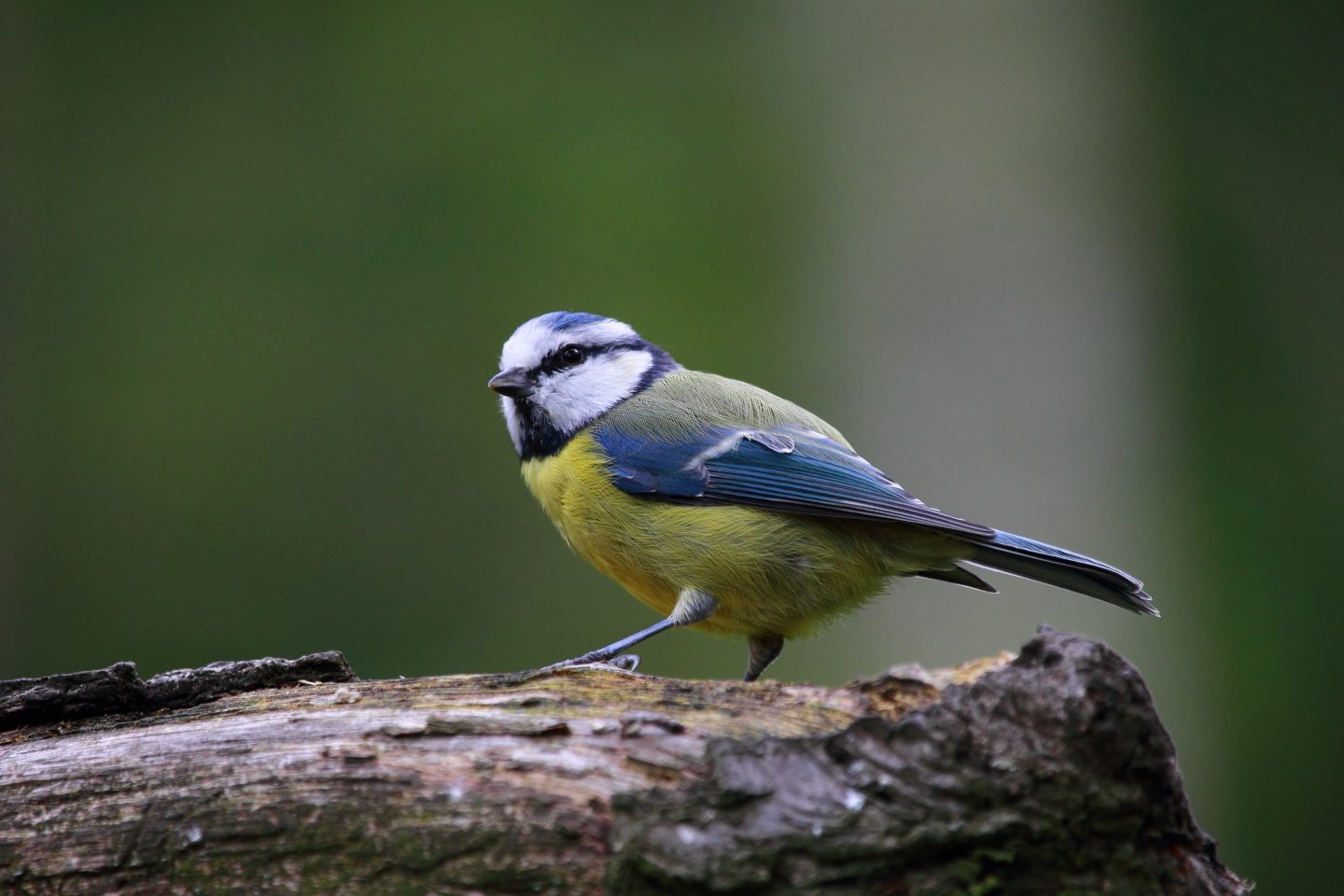
Sparrow
These commonly spotted birds aren’t fussy about where they eat from. They’ll happily consume from a bird feeder, bird table or the ground. They like seed mixes.
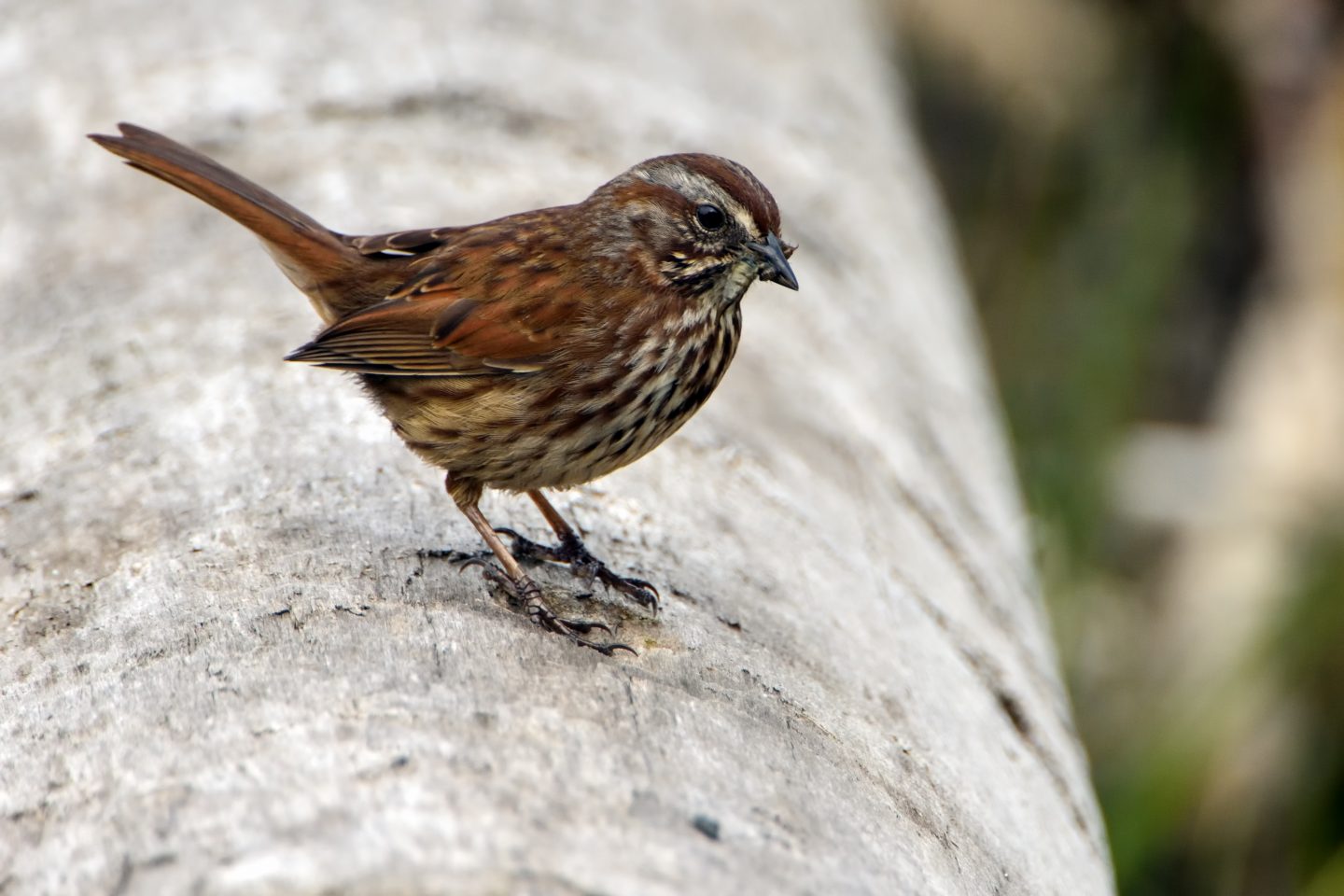
Robin
Some say that these birds, commonly seen on Christmas cards, are loved ones’ spirits visiting. Whether you believe this or not, these beautiful birds are lovely to spot around the garden. They also enjoy seed mixes, as well as suet blocks, fat balls and live mealworms!
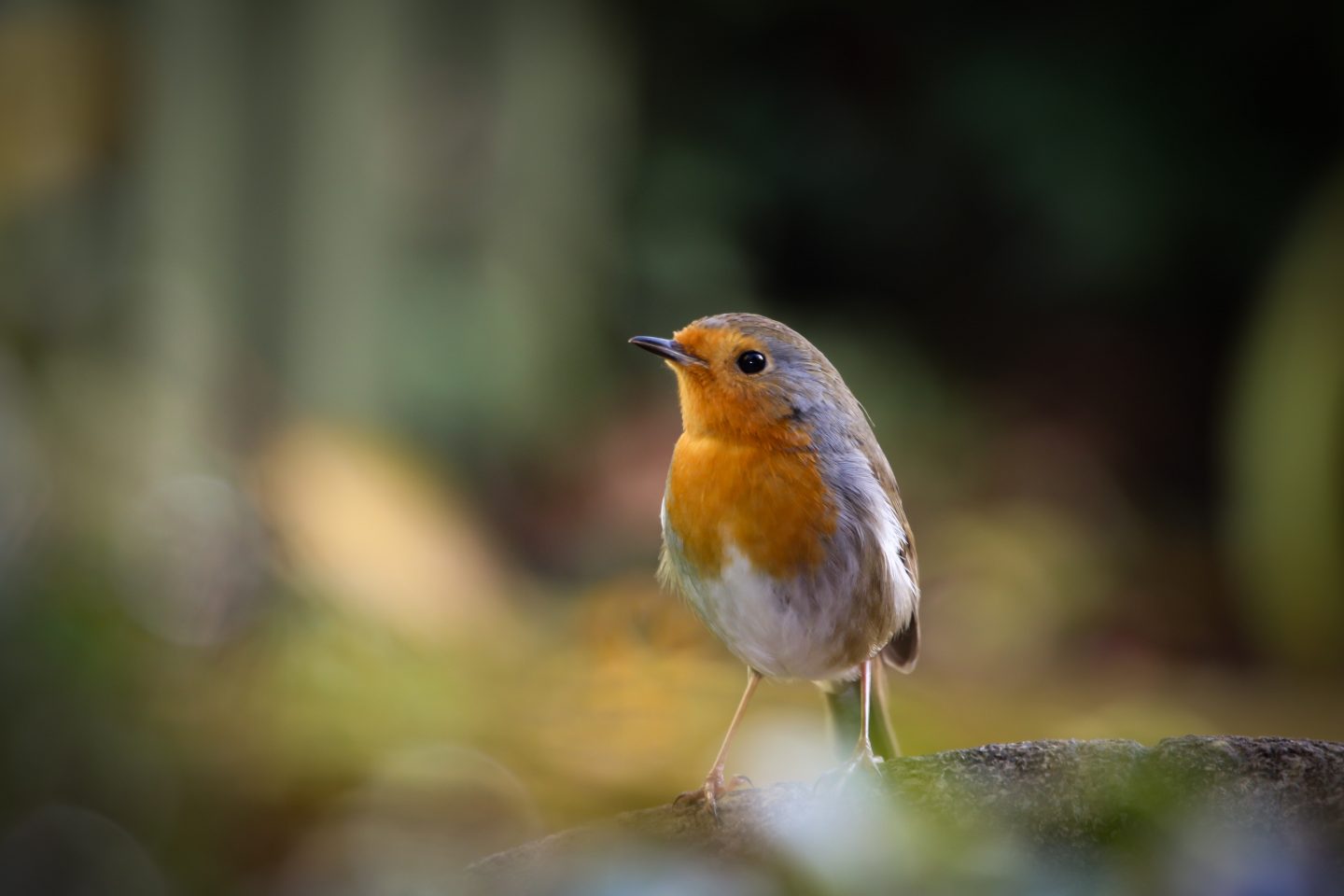
Blackbird
These birds with a distinctive sound will eat from a bird table or the ground. For them, you can put out sunflower hearts, as well as rolled oats and sultanas.
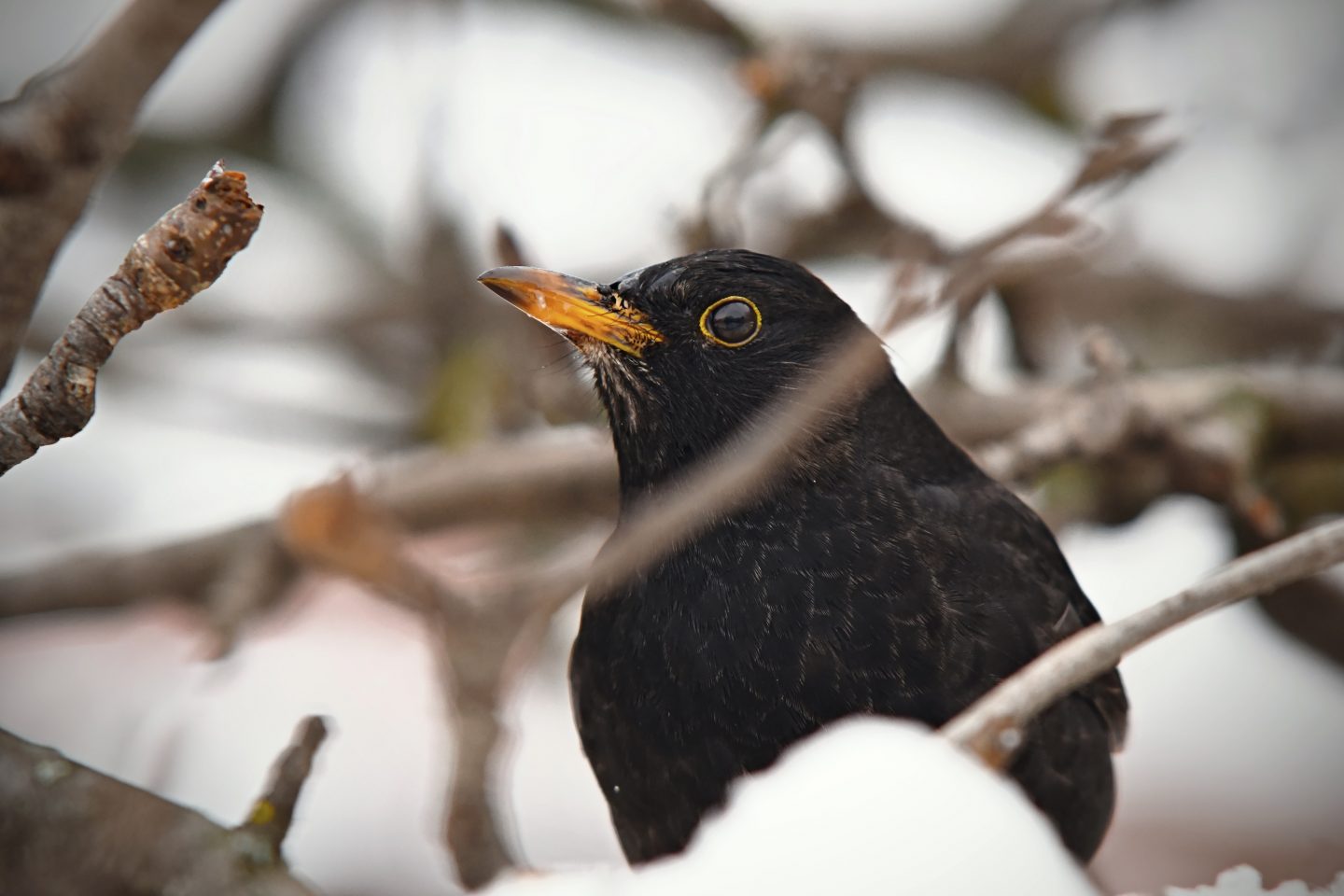
Why not print out this useful infographic to help you remember?
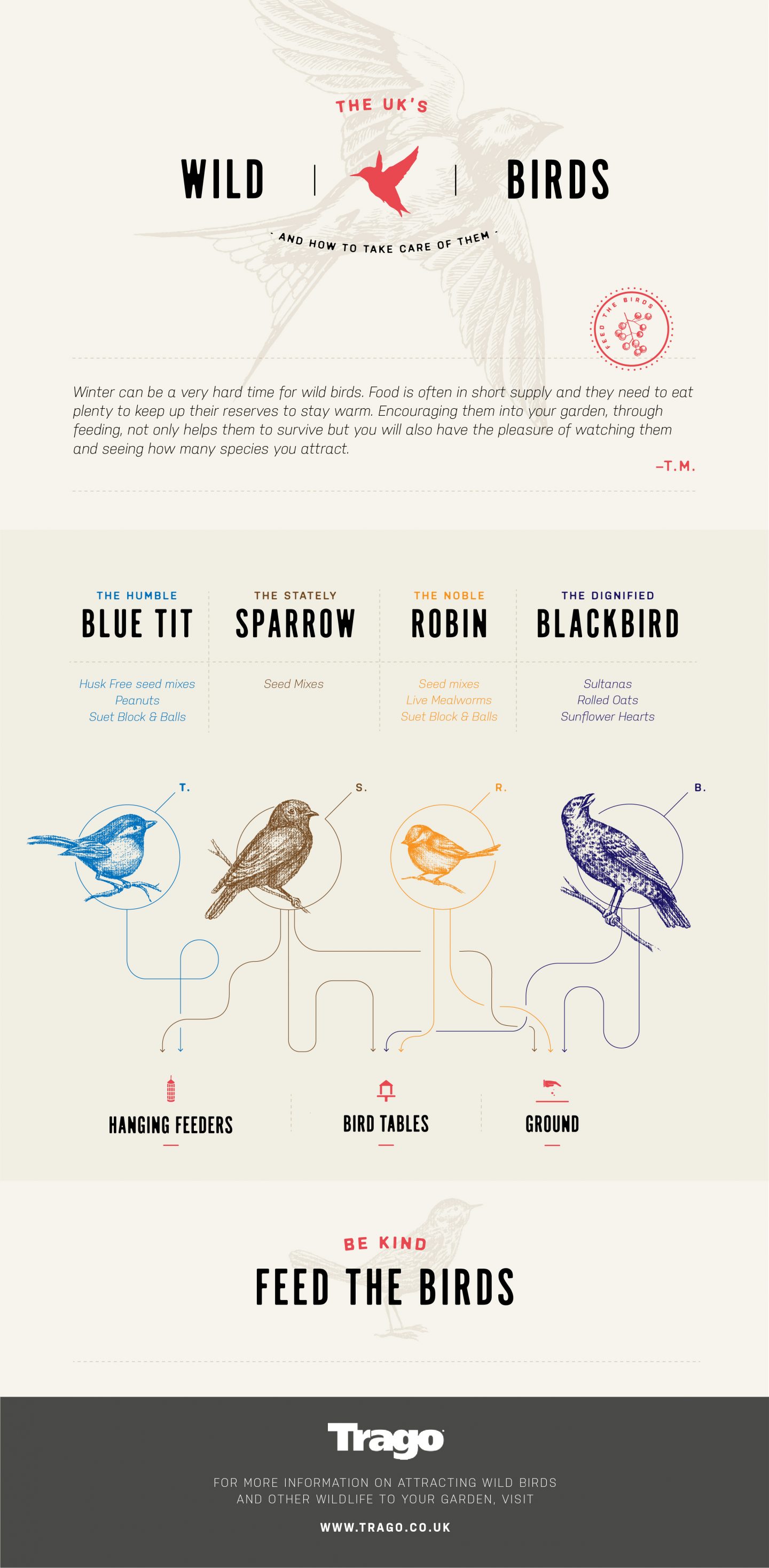
Water
Bird baths are, of course, designed for birds to drink from. However, you can provide drink for them if you fill a bucket or even fill an empty takeaway container with water. To prevent it from freezing over completely, place a small ball on the top. This will allow your birds to keep hydrated when their other sources have become unavailable.
Good luck with welcoming more wild birds to your garden this winter. Let me know how it goes!
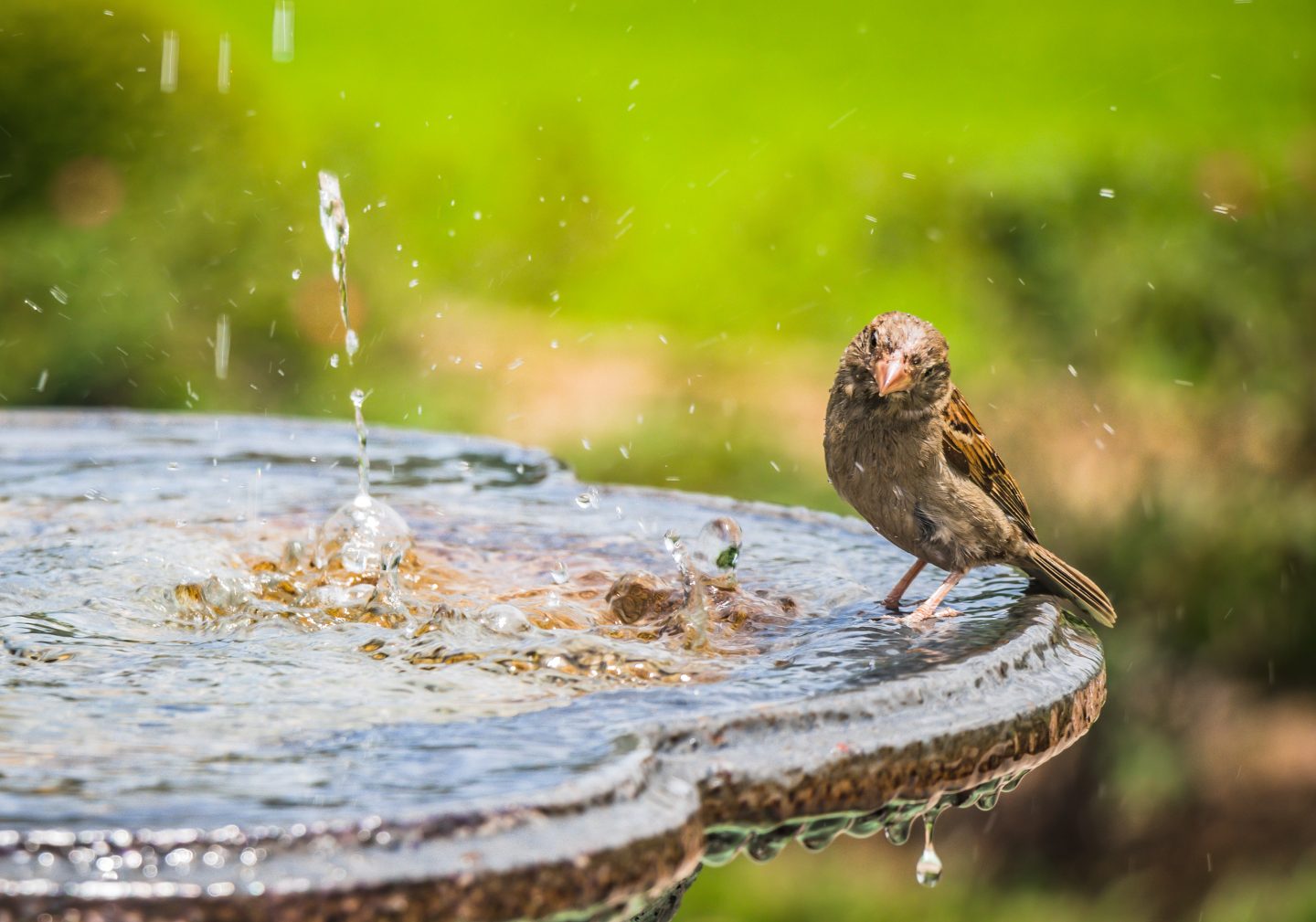
Disclosure: This is a sponsored post in collaboration with Trago. All views and opinions are honest and my own.
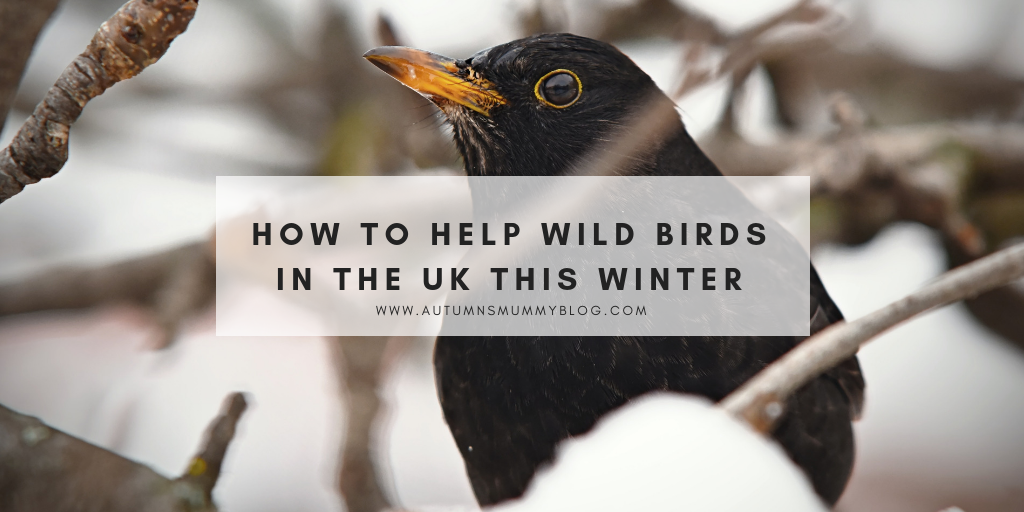
I’m from the US, so all of these birds look exotic to me! Even the robin is different from robins here. I usually put out sunflower seeds for most birds and suet for the woodpeckers. I love to watch them!
We are lucky enough to live very close to the countryside so we have lots of beautiful species of birds landing in our back garden. I keep a bird feeder so that we can watch them from inside. The children love it!